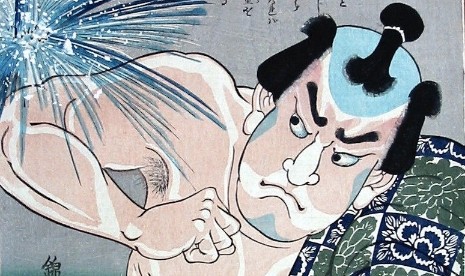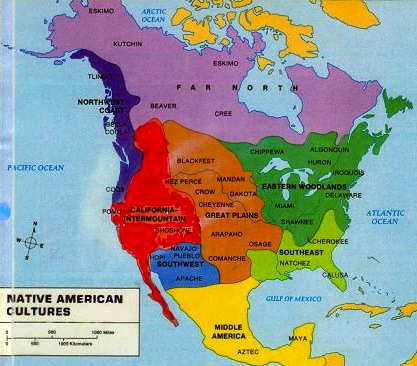Folktales Introduction:

|
Folktale Intro Activity.pdf Size : 45.004 Kb Type : pdf |

What is a Folktale? (Reading Part 1)
A folktale is a type of traditional story that tries to explain or
understand the world. Such stories were orally passed down through the
generations and feature morals or lessons. The stories usually take
place long ago in a faraway place and are woven around talking animals,
royalty, peasants, or mythical creatures.
In a folktale, goodness is always rewarded. Heroes and heroines live
happily ever after while villains are suitably punished. Throughout the
generations, the story may change but its core remains the same.
Folktales usually have no identified author, but they mirror the values
and culture of the society from which they originated.
Before the Internet, newspapers, radio, television, and other types of
media, the world relied on storytellers for entertainment and education.
Storytellers related magical tales to eager listeners that taught
valuable lessons by providing glimpses into strange, faraway worlds.
These stories continued to thrive, passed down throughout the centuries.
In 1450, when Johan Gutenberg invented the movable type printing press,
the emergence of the book publishing industry made it possible for
people to print books of folktales. Having folktales in hard copy form
helped preserve the rich array of folktales floating around Europe.
In
the 1800s, Europeans began to double their efforts in recording their
cultural history by collecting regional folktales into books. People like Joseph Jacobs from England, Wilhelm and Jacob Grimm from
Germany, and Peter Asbjornsen and Moe Jorgen from Norway, were all early
collectors of regional folktales. Their versions of these stories can
still be found in anthologies and picture books throughout the world.
Various types of folktales exist in the world today:
A cumulative
folktale features a plotless story where events follow a repetitious
pattern. Examples of this type include The House That Jack Built or
There Was an Old Lady Who Swallowed a Fly.
Talking animal folktales
feature animals who speak like humans. These stories teach lessons about
the rewards of being brave, independent, and clever. Examples include
stories such as The Three Little Pigs or The Three Billy Goats Gruff.
Humorous folktales involve silly stories about characters who do
ridiculous things and make funny mistakes. A good example of this type
is the story Jack and the Three Sillies.
A realistic folktale contains
very little magic and features a realistic plot, setting, and
characters. Blue Beard is a prime example of this type.
Reading a folktale provides a glimpse into world cultures, allowing the
reader to gain insight into the values and customs of the society that
produced the particular oral tale. Children and adults all over the
world continue to enjoy reading and listening to folktales because such
stories spark the imagination and transport their audiences to distant
lands.
Written by K T Solis
Edited by Bronwyn Harris
For further reading:
What are myths, legends and folktales?
Questions for Understanding
1. What is a folktale?
2. What do folktales mirror with regards to their culture of origin?
3. Who invented the the movable type printing press? How did its invention impact folk tales?
4. Identify one of the collectors of folktales that emerged in the 1800's in Europe.
5. Explain one of the various types of folktales that exist in the world today.
Please submit your answers as a Google Document titled like this:
Folktales Reading.Your Name. MYP 8
Your assignment will be assessed under MYP Criteria A - Knowledge

Pansori - Dramatized Folktales of Korea
(Reading Part 2)
Pansori is a form of Korean drama in which traditional Korean folktales are performed to music. In a pansori performance, there are two performers: the gosu and the kwangdae.
The gosu is a drummer, who accompanies the kwangdae, or singer. In more
modernized performances, sometimes several singers perform, voicing
different characters in the piece to provide more color.
The audience is also an integral part of the pansori,
as they are expected to respond with sounds of encouragement and
applause at various points in the performance. During the performance, the audience can hear singing and stylized speech, along with the sounds of the drum and chuimsae, sounds which are made by the gosu as the singer performs. The audience can also respond with chuimsae of its own.
Pansori performances are classically quite long. A full madang
or story can take hours to perform, so modern pansori performances are
often offered in sections so that audiences do not get restless. These
epic sung folktales have their roots in the 1600s, and they became
especially popular in the 1800s. The training involved is grueling, as
are the performances themselves.
By the 1960s, interest in pansori appeared to be dwindling. There was a concern that this traditional art form would die out in Korea. In response, the government classified it as a National Cultural Intangible Property and continues to protect and promote it. Performers and trainees often receive generous government assistance, the government sponsors performances, and it encourages pansori performers to interact with the public through educational programs, all in the hopes of exciting the next generation.
Written by S.E. Smith
Edited by Daren Blanck
For further reading (pdf):
What is Pansori?
Questions for Understanding
1. What is pansori?
2. Who are the performers in pansori? What do they each do?
3. What is one of the roles of the audience in a pansori performance?
4. What is a madong? How long does it take to perform a complete classical madong?
5. What is one thing the Korean government has done to keep pansori alive?
Please submit your answers as a Google Document titled like this: Folktales Reading.Your Name. MYP 8 Your assignment will be assessed under MYP Criteria A - Knowledge

Asian Folktales Homework
Choose and read one of these folktales from around Asia as a homework assignment. Read carefully! You will be asked to remember key details.
The Boy Who Drew Cats: A Tale of Japan
The Story Spirits: A Tale of Korea
Kings for Breakfast: A Hindu Legend
Too-too-moo and the Giant: A Tale of Indonesia
The Millionaire Miser: A Buddhist Legend
The Four Puppets: A Tale of Burma
MYP Criteria D-Personal Engagement

Native American (Indian) Folktales
Choose two or three folktale from these links that you think might make good reader's theatre. You will work to develop a script in an ensemble.
Tie in with your mask unit - You should create a "traditional" mask for one or more of your characters.
Native American Lore
First People - The Legends
Lakota Legends Youtube Playlist
Note that the movie begins with video #7 on the playlist.
Your performance and discussion to follow will be evaluated using MYP Criteria B-Application, MYP Criteria C-Reflection, and this rubric:

|
Readers’ Theater Presentation Rubric.pdf Size : 58.729 Kb Type : pdf |
